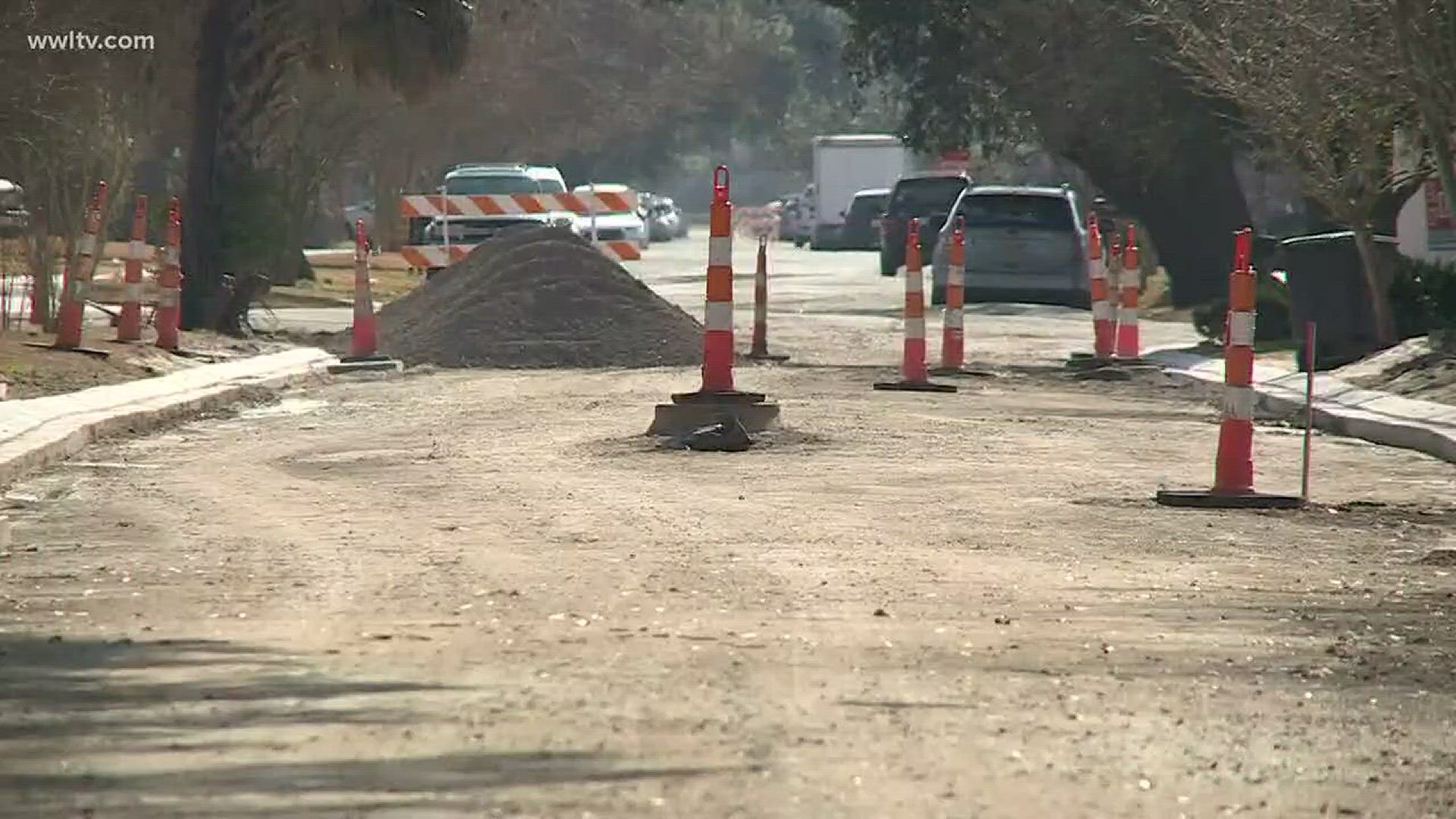While New Orleans Mayor Mitch Landrieu has been touting a $2 billion dollar FEMA settlement as the answer to some of the city's infrastructure ills, transition documents sent to the incoming mayor indicate there's no one at City Hall capable of managing that big of a repair program, leaving much of the money unspent and the repairs not done or incomplete.
The transition documents, more than 1,000 pages in length, provide Mayor-Elect Latoya Cantrell with a framework of each city department and agency, including strengths and weaknesses, risks and problems that need immediate action.
In the transition document for the Department of Public Works, under a section that spells out things that need immediate attention, interim director Dani Galloway cites a "Lack of full-picture program management and senior level personnel to run complicated $2 billion programs."
Some residents in neighborhoods with streets that pock-marked, to put it mildly, say they’re frustrated with the slow start of the city’s road work program, but not surprised.
In a one-block section of General Haig, one of the streets that is slated for repair under the $2 billion program, the road is blocked off with “road closed” signs and a large pile of dirt at either end of the closure.
Chris Hymel’s home sits on that block, a home he and his wife will be leaving in two weeks.
“We're getting ready to move to Covington and the streets finally being repaired after many, many years,” Hymel said.
In mid-December, a city contractor came in and tore up the street, repaired the curbs and put in new catch basins.
When asked what his section of street looked like before, Hymel replied, “Third world country. It was pretty bad.”
The rest of General Haig is just as bad. And while Hymel’s block is now leveled out, the work has stalled.
“Now it's on hold. There's a Sewerage & Water Board problem down the street,” he said.
The lack of coordination between the two agencies was supposed to be addressed by the joint infrastructure repair program. In fact, FEMA documents show the settlement that Landrieu announced in December 2015 includes more than $1.4 billion for CNO and almost $300 million for the S&WB, all money FEMA agreed to pay to help repair damage done to the city’s infrastructure by Hurricane Katrina.
While Landrieu announced the settlement with FEMA in late 2015, the city’s Road Works website only lists eight projects that have gone out to bid.
In the DPW transition memo, Interim Public Works Director Dani Galloway writes one of the things needing immediate attention is some decision making on the $2 billion dollar road work program because of “Lack of full-picture program management and senior level personnel to run complicated $2bn programs.”
Again, that lack of management and coordination isn’t surprising for many residents in neighborhoods where passenger cars regularly bottom out in craters on the roads.
“It's obvious. They don't have to say that. It's obvious,” Hymel said.
Robert Lupo is one of the founders of the grassroots group Fix My Streets. Three years ago, the group made recommendations about coordinated road and pipe repairs that he says he feels fell on deaf ears.
While Lupo admitted the pace of construction has picked up slightly in the last 6 months, he said it’s not where it should be.
“You would hope that you would see about $200 million worth of work being implemented this year which is what all those department heads told our task force,” Lupo said.
While a lack of adequate management of the program is a concern, Craig Belden, Press Secretary for Mayor Mitch Landrieu said additional delays are being caused by required environmental and historic preservation reviews.
“For example, we learned after the launch of the program in 2016 that all projects located within a historic district would require an additional 120-day review period. Additionally, projects that have road work with water, sewer and drainage replacements require even more time for coordination with SWBNO and other utilities throughout the design, bid and award and construction phases,” Belden said.
Closer coordination with the S&WB was the reason given for former Executive Director Cedric Grant wearing two hats: deputy mayor of infrastructure and head of the S&WB.
Grant left the post after a public outcry following two floods during summer rain storms last summer.
In her memo to Cantrell, Galloway also cites “external actors” as one of the biggest risks that could impact DPW “finances or public safety.”
“DPW characterized by hostile messaging from external actors (businesses, neighborhood associations, even City Council); DPW is also characterized by its impact on the tourism industry, particularly how well streets and sidewalks are maintained (especially for festivals such as Mardi Gras) and how well information is portrayed (i.e. parking signs for out-of-town visitors),” the memo reads.
As the founder of one of those neighborhood organizations, Lupo calls that quote “disturbing.”
"I thought all these people who pay their taxes were the people who, basically, you were responsible to. I didn't know we were an aggravation to the department heads," Lupo said.
“The comment about external actors was written to highlight the challenges in perception of DPW following the August flooding events. Rebuilding confidence of the public in the department’s work, like successfully executing the catch basin cleaning goals, can and will go a long way in overcoming this challenge,” said Craig Belden, Press Secretary for Mitch Landrieu wrote in a statement issued late Monday.
The memo recommends Cantrell hire an outside contractor within her first 100 days to run the program.
$100 million in federal Hazard Mitigation Grant dollars are part of the $2 billion program and the city stands to lose it if the money remains unspent past an August 2019 deadline.

